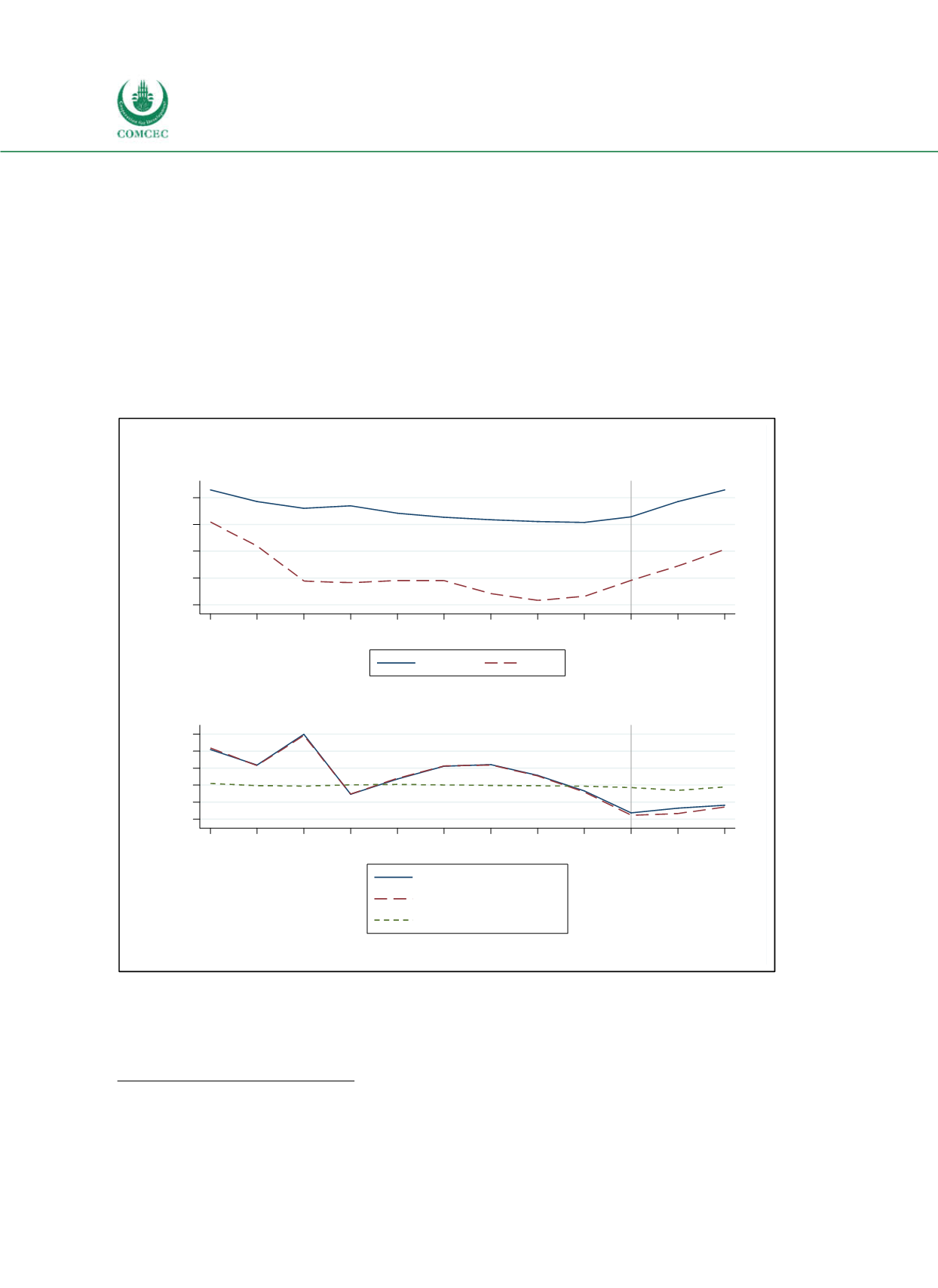

Improving Public Debt Management
In the OIC Member Countries
166
4.1.15
Kingdom of Saudi Arabia
A) Public Debt Dynamics
The Kingdom of Saudi Arabia’s general government debt levels have been low until 2014
because of high oil revenues (see Figure 441).
32
Since 2007, when the debttoGDP ratio was
about 17.1% of GDP, Saudi Arabia has even managed to reduce the ratio to 1.6% in 2014 and
the country had deposits in the banking system in the amount of 56% of GDP at end2014 (IMF
2015b). Until 2015, the government of Saudi Arabia mainly used its financial reserves to cover
budget deficits (Torchia 2015). Net lending was always positive between 2006 and 2014 with
the exception being 2009, when the global financial crisis hit the oilproduction based
economy.
Figure 4-41: Saudi Arabia – Public Debt Dynamics
Sources: WEO (2016), IMF (2015a, 2016b), calculations by the Ifo Institute.
The decline in oil prices starting in 2014, however, gave rise to a decline in oil revenues. Since
then, the government has been in a net borrowing position, which reached its maximum at
16.3% of GDP in 2015. Saudi Arabia used deposits in the central bank to finance the deficit, but
32
Oil revenues accounted for about 90% of central government fiscal revenues before 2015. The share of oil revenues is
expected to decrease to around 80% for the years 2015 and 2016 because of the decline in oil prices (IMF 2015a,
2015b).
-60 -40 -20 0 20
% of GDP
2006
2007
2008
2009
2010
2011
2012
2013
2014
2015
2016
2017
Gross
Net
Projections
Public Debt
-20 -10 0 10 20 30
% of GDP
2006
2007
2008
2009
2010
2011
2012
2013
2014
2015
2016
2017
Net lending
Primary net lending
Net interest payments
Net Lending
















